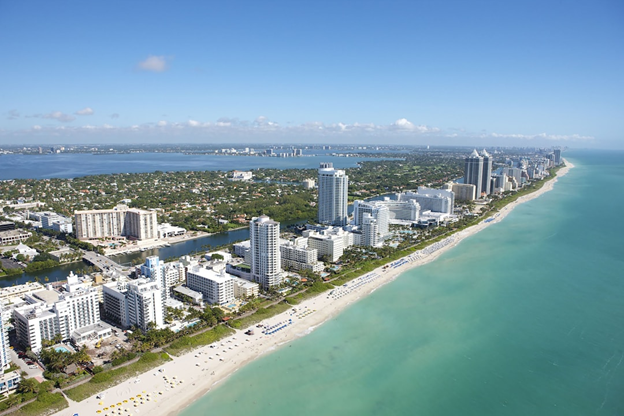

Living in Florida offers a vibrant lifestyle, but it also comes with the looming threat of tropical storms and hurricanes. To mitigate these risks, the state has instituted the Florida Building Code, which sets out stringent standards for construction and design. By adhering to these regulations, developers and homeowners not only create visually appealing spaces but also ensure their properties are built to withstand the harsh and dynamic climate of the state.
In essence, Florida building codes serve as a cornerstone in shaping Florida's architectural landscape, fostering a culture of safety and sustainability in the face of environmental challenges. Remember the classic tale of the Three Little Pigs and the choice between a flimsy house made of straw and sticks or a sturdy one built of bricks? Just as the brick house stood strong in the story, a well-built home fortified by stringent building codes offers a sense of security and peace of mind.
While we fell asleep to these fairytales as kids - the often tedious compliance process saves us from construction nightmares as adults.
Florida's codes are the minimum standards for construction and are known for their strict regulations and adherence to safety guidelines. Therefore, it's essential to consult with an experienced architecture firm when designing any Florida home. Keep reading to learn more about building codes in the Sunshine State.

Since as early as 1790 B.C., building regulations have played a crucial role in ensuring the safety and integrity of structures. The sixth Babylonian king, Hammurabi, is credited with enacting the first set of building regulations in history. Hammurabi's code even included building regulations that covered aspects related to construction during his time. Today, however, the earthen bricks and wooden doors of Hammurabi's time have now been replaced by a complex network of components in modern construction, each governed by its own set of codes, regulations, and standards. Building code regulations have evolved significantly along with the advancement of building materials and techniques.
In Florida, building regulations have evolved significantly in recent decades. In 1974, the state took a significant step by adopting a minimum building code to ensure public health and safety. However, initial Florida building codes left room for local governments to customize guidelines according to their preferences, leading to a lack of uniformity and potential vulnerabilities in construction practices.
The devastating impact of Hurricane Andrew in 1992 served as a wake-up call, highlighting the shortcomings of the existing building code. The storm, a Category 5 hurricane, caused widespread destruction, claiming 65 lives, destroying 60,000 homes, and damaging an additional 100,000 homes. The existing codes, written in the 1990s, weren't thorough enough to protect people and property from harm. In response, officials recognized the urgent need to address the deficiencies in the building code. This realization spurred a reevaluation of regulations, leading to the development of more stringent and standardized building codes to safeguard against future disasters.
Since the aftermath of Hurricane Andrew's devastation, significant efforts have been made to enhance Florida's building codes. The primary objective was to devise a comprehensive code that could be uniformly enforced across the state. This initiative aimed to streamline and centralize building codes, replacing the previously disparate regulations. The inaugural edition of the Florida Building Code was introduced in 2002 to fulfill this vision. Continuously evolving, the code is now in its seventh edition, overseeing all aspects related to the planning, construction, maintenance, modification, renovation, and dismantling of private and public structures.
The Florida Building Code serves as a dynamic regulatory framework that underscores the importance of safety and resilience in the face of natural disasters. By incorporating the latest research, technology, and best practices, the code sets high standards for construction to withstand environmental challenges and protect occupants. This proactive approach safeguards lives while minimizing property damage and promoting sustainable development. Through ongoing revisions and updates, the Florida Building Code is a pivotal tool in ensuring the structural integrity and longevity of buildings throughout the state, fostering a safer and more resilient environment for current and future generations.

When incorporating regulations into their process, architects, designers, and builders in Florida face a unique blend of challenges and opportunities. Florida's geographical location and vulnerability to natural disasters make it crucial for professionals to develop innovative solutions that prioritize both aesthetics and durability. By strictly adhering to Florida building codes, architects can create residential spaces that not only seamlessly integrate into the region's cultural landscape but also stand resilient against harsh climate conditions.
Additionally, compliance with city-specific regulations, such as building codes in Miami, is imperative to ensure structures are designed and built to form and function requirements within a particular area. To navigate this complex web of regulations, developers and potential property owners should partner with established Florida-based architecture firms like MIK Architecture. Collaborating with experts in the field ensures design concepts are executed in a way that seamlessly aligns with the existing regulatory framework, offering a harmonious blend of creativity and compliance.
Living in the Sunshine State provides residents with a vibrant and enjoyable lifestyle, but the unique climate and weather conditions make it crucial for homes to adhere to stringent building codes. These codes are designed to ensure structures can withstand the challenges posed by hurricanes, high humidity, and intense sunlight. By incorporating the latest research on structural integrity, energy efficiency, ventilation systems, and other key factors, Florida's building codes provide homeowners with peace of mind regarding the safety and sustainability of their homes.
We were developers first and have a deeper insight into compliance than most other firms. If your next project and investment can’t afford to fail, we’d love to help you future-proof it. Give us a call!
